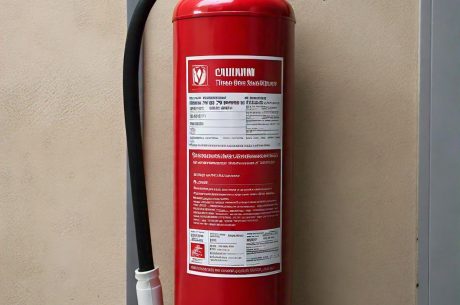Summary
Dealing with a fire emergency is traumatic, but what follows after the flames are out often catches homeowners off guard — fire extinguisher residue cleanup. In this in-depth guide, we reveal 6 critical facts about the hidden mess fire extinguishers leave behind, especially from dry chemical and CO₂ extinguishers. Most people assume the job ends after putting out the fire, but leftover residue can damage electronics, corrode surfaces, irritate lungs, and trigger long-term health issues if not cleaned properly.
Whether it’s sodium bicarbonate, potassium chloride, or monoammonium phosphate, this blog explains the differences between extinguisher types, how each impacts your home, and the urgent cleanup steps you must take to prevent mold growth, toxic exposure, or permanent property damage.
Table of Contents
Introduction
Fire extinguisher residue issue: When a fire breaks out, the first thought is to put it out quickly and rightly so. But what happens after the flames are gone? Many homeowners are surprised to find a hidden mess left behind: fire extinguisher residue. Whether it’s from a kitchen blaze or a garage mishap, this chalky, chemical-laden powder can pose serious health and property risks if not cleaned properly. This guide dives deep into why fire extinguisher cleanup matters, how to tackle it safely, and what most homeowners overlook.

The Mitchell Family’s Wake-Up Call
When the Mitchells noticed smoke billowing from their laundry room dryer, Mr. Mitchell quickly grabbed the fire extinguisher and doused the flames. Crisis averted. Or so they thought.
The next morning, their daughter Sarah woke up with a sore throat and itchy eyes. The once-pristine laundry room now had a white film on every surface. Their HVAC system had unknowingly sucked in the residue and circulated it through the home. A quick save turned into weeks of health concerns, HVAC repairs, and professional cleanup costs.
The Mitchells’ story is not unique. It highlights a common yet overlooked aspect of fire safety: the aftermath.
Why Fire Extinguisher Residue Cleanup Is Crucial
- Health Risks: Many fire extinguishers contain monoammonium phosphate, a skin and respiratory irritant.
- Surface Damage: Residue can corrode metal, stain fabrics, and damage electronics.
- Air Quality: Residue can become airborne and compromise indoor air quality.
- HVAC Contamination: As in the Mitchells’ case, residue can spread through ventilation systems.
Types of Fire Extinguishers and Their Residue
- Dry Chemical (ABC): Leaves a fine yellow powder. Toxic if inhaled or ingested.
- CO2 Extinguishers: No residue but displaces oxygen.
- Water Mist & Foam: Minimal residue but can lead to moisture damage.
- Clean Agent: Ideal for electronics; evaporates quickly but still requires surface inspection.
DIY Fire Extinguisher Residue Cleanup Guide

- Wear Protective Gear: Gloves, goggles, and an N95 mask.
- Ventilate the Area: Open windows and use fans to circulate air.
- Dry Vacuum First: Use a HEPA vacuum to remove loose powder.
- Wipe Down Surfaces: Use a mild soap and warm water solution.
- Rinse and Dry: Use a clean cloth and dry completely to avoid moisture damage.
- Dispose of Waste Properly: Place residue in a sealed bag and follow local disposal guidelines.
When to Call Professionals
- If the fire occurred in the HVAC zone.
- If the residue spread to electronics or sensitive materials.
- If anyone in the household experiences symptoms like coughing or eye irritation.
For immediate assistance with fire damage restoration, contact PuroClean Disaster Restoration, Call (+1) 317-467-4436 or (+1) 260-263-9788 for Fort Wayne location.
PuroClean Disaster Restoration has over 19 years of experience in the fire damage restoration industry, with over 100 5 Star reviews on Google serving Indianapolis. Click on this link to see it’s online reviews and ratings.

Common Search Queries on Fire Extinguisher Residue
- “How to clean up fire extinguisher powder”
- “Is fire extinguisher residue toxic?”
- “Fire extinguisher cleanup near me”
- “Can I vacuum fire extinguisher residue?”
FAQs
Q1: Is fire extinguisher residue harmful?
Yes, especially dry chemical residue. It can irritate the skin, eyes, and lungs.
Q2: Can I clean fire extinguisher residue myself?
Yes, but with caution. Use proper protective gear and cleaning methods.
Q3: How do I know if the residue has entered my HVAC system?
If you notice dust in vents or increased allergy symptoms, it’s a sign. Consider an HVAC inspection.
Q4: Does fire extinguisher residue damage electronics?
Yes. The powder is corrosive and should be professionally cleaned from devices.
Q5: What should I do immediately after using a fire extinguisher?
Ventilate the space, wear protective gear, and start dry vacuuming the area.
Q6: Is professional cleanup necessary?
In many cases, yes—especially if the residue is widespread or you have health concerns.
Q7: How long does the cleanup take?
DIY cleanup can take a few hours. Professional cleanup may take 1–2 days depending on severity.
Q8: Will insurance cover fire extinguisher residue cleanup?
Some policies may cover it under fire damage. Check with your provider.
Q9: Are there eco-friendly ways to clean the residue?
Yes, using vinegar or baking soda solutions can be effective for mild cases.
Q10: Where can I find professional fire extinguisher residue cleanup services?
Search for certified fire damage restoration companies in your area, such as PuroClean.
Conclusion
Fire extinguisher residue cleanup is often the last thing on a homeowner’s mind after a fire. Yet, neglecting it can lead to long-term health issues and property damage. By understanding the risks and knowing how to respond, you can ensure your home is truly safe after the flames are gone.



 PuroClean Disaster Restoration
PuroClean Disaster Restoration